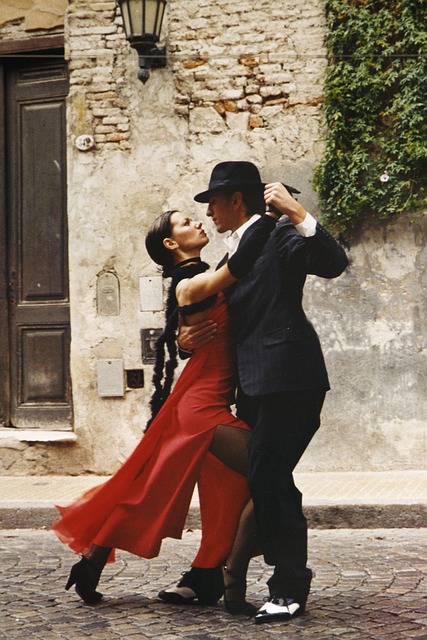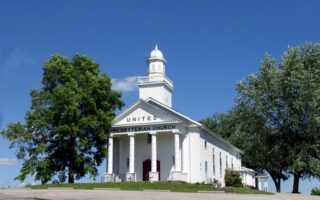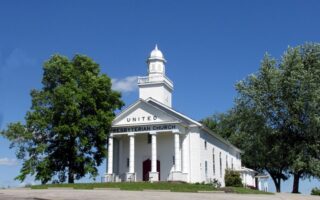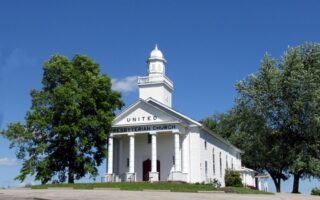Presbyterians have varying beliefs and practices regarding dancing, as it is not explicitly addressed in their core doctrines. Some Presbyterian denominations may discourage or prohibit certain forms of dancing, while others may embrace it as a form of expression and celebration. Ultimately, individual beliefs and interpretations within the Presbyterian community may differ on this matter.
Table of Contents
The Historical Perspective of Dancing in Presbyterianism
Do Presbyterians believe in dancing? This is a question that has been asked by many people over the years. To understand the answer, it is important to take a look at the historical perspective of dancing in Presbyterianism.
In the early days of the Presbyterian Church, dancing was generally frowned upon. This can be attributed to the influence of the Scottish Reformation, which emphasized a strict adherence to biblical teachings. Many early Presbyterians believed that dancing was a sinful activity that led to immorality and temptation.
However, as time went on, the views on dancing within the Presbyterian Church began to shift. In the 19th century, there was a movement known as the “holiness movement” that sought to bring about a greater emphasis on personal piety and holiness. This movement led to a more relaxed view on dancing, with many Presbyterians starting to see it as a harmless form of recreation.
By the early 20th century, dancing had become more accepted within the Presbyterian Church. Many churches began to host dances as social events, and dancing became a common activity at church gatherings. However, there were still some conservative factions within the church that held onto the belief that dancing was sinful.
In the mid-20th century, the issue of dancing within the Presbyterian Church became a topic of debate. Some argued that dancing was a form of self-expression and a way to celebrate joy and happiness. Others believed that it still had the potential to lead to immorality and should be avoided.
In response to this debate, the General Assembly of the Presbyterian Church (USA) issued a statement in 1952 that acknowledged the diversity of opinions on dancing within the church. The statement emphasized that dancing should be approached with caution and discernment, and that individuals should be mindful of the potential for temptation and immorality.
Since then, the Presbyterian Church has continued to hold a variety of views on dancing. Some churches have embraced dancing as a form of worship and celebration, while others have chosen to abstain from it altogether. Ultimately, the decision on whether or not to dance is left up to the individual and their own personal convictions.
It is important to note that while the Presbyterian Church may have varying views on dancing, it does not mean that dancing is inherently sinful or prohibited. The church recognizes that dancing can be a joyful and meaningful activity, but also acknowledges the potential risks and challenges that can come with it.
In conclusion, the historical perspective of dancing in Presbyterianism has evolved over time. While dancing was initially seen as sinful, the church has become more accepting of it as a form of recreation and celebration. However, the Presbyterian Church still encourages individuals to approach dancing with caution and discernment, recognizing the potential for temptation and immorality. Ultimately, the decision on whether or not to dance is a personal one, guided by one’s own convictions and beliefs.
Understanding the Role of Worship and Dance in Presbyterian Churches

Do Presbyterians believe in dancing? This is a question that often comes up when discussing the role of worship and dance in Presbyterian churches. While it is true that some Christian denominations have strict views on dancing, Presbyterians tend to have a more open and inclusive approach.
In Presbyterian churches, worship is seen as a central part of the Christian faith. It is a time for believers to come together and express their devotion to God. While traditional forms of worship, such as prayer and singing hymns, are commonly practiced, there is also room for more contemporary expressions of worship, including dance.
Dance has a long history in religious rituals and ceremonies. It has been used as a form of worship in various cultures and traditions throughout the ages. In Presbyterian churches, dance is often seen as a way to express joy and gratitude to God. It can be a powerful and meaningful way to connect with the divine and to celebrate the goodness of creation.
However, it is important to note that not all Presbyterian churches incorporate dance into their worship services. The decision to include dance in worship is ultimately up to the individual congregation and its leadership. Some churches may feel that dance is not a suitable form of worship for their particular community, while others may embrace it wholeheartedly.
For those churches that do include dance in their worship services, there are often guidelines and principles that are followed. Dance is typically seen as a form of expression that should be done with reverence and respect. It should not be used for entertainment or self-glorification, but rather as a way to honor and glorify God.
In Presbyterian churches, dance is often integrated into the overall worship experience. It may be incorporated into the music and singing, or it may be performed as a separate act during the service. The style of dance can vary, ranging from traditional forms to more contemporary expressions. The important thing is that the dance is done with sincerity and a genuine desire to worship God.
It is also worth noting that dance is not limited to the worship service itself. Many Presbyterian churches offer dance classes and workshops as a way to engage the community and promote physical and spiritual well-being. These classes can be a fun and enjoyable way to connect with others and deepen one’s faith.
In conclusion, while not all Presbyterian churches believe in dancing, many do embrace it as a form of worship. Dance can be a powerful and meaningful way to express devotion to God and celebrate the goodness of creation. Whether it is incorporated into the worship service itself or offered as a separate activity, dance can play a valuable role in the spiritual life of a Presbyterian congregation. So, the next time someone asks if Presbyterians believe in dancing, the answer is yes, but it ultimately depends on the individual church and its beliefs.
Debunking Myths: Exploring Presbyterian Views on Dancing
Do Presbyterians believe in dancing? It’s a question that has been asked time and time again, and the answer may surprise you. Contrary to popular belief, Presbyterians do not have a blanket ban on dancing. While it is true that some conservative branches of the Presbyterian Church have historically frowned upon dancing, the majority of Presbyterians today have a more relaxed view on the subject.
To understand the Presbyterian perspective on dancing, it is important to delve into the history of the church. In the early days of the Presbyterian Church, dancing was often associated with immorality and excess. This led to a general disapproval of dancing within the church community. However, as society evolved and attitudes towards dancing shifted, so did the views of many Presbyterians.
Today, the Presbyterian Church acknowledges that dancing can be a form of artistic expression and a way to celebrate joyous occasions. Many Presbyterians see dancing as a way to bring people together and foster a sense of community. It is not uncommon to find Presbyterian churches hosting dance events or incorporating dance into their worship services.
That being said, there are still some conservative branches of the Presbyterian Church that maintain a more restrictive stance on dancing. These churches may discourage or even prohibit dancing altogether. However, it is important to note that these views are not representative of the entire Presbyterian community.
In recent years, there has been a growing movement within the Presbyterian Church to embrace dancing as a legitimate form of worship. This movement recognizes that dancing can be a powerful way to express one’s faith and connect with God. Many Presbyterian churches now incorporate dance into their worship services, using it as a means of praise and worship.
The shift in attitudes towards dancing within the Presbyterian Church can be attributed to a broader shift in society’s views on the subject. As society becomes more accepting of diverse forms of expression, so too does the church. Presbyterians are increasingly recognizing that dancing can be a positive and meaningful way to engage with their faith.
It is also worth noting that the Presbyterian Church is a diverse denomination with a wide range of beliefs and practices. While the majority of Presbyterians may be accepting of dancing, there will always be some who hold more conservative views. It is important to respect and understand these differing perspectives within the Presbyterian community.
In conclusion, the idea that Presbyterians do not believe in dancing is a myth. While there are some conservative branches of the Presbyterian Church that maintain a more restrictive stance on dancing, the majority of Presbyterians today embrace dancing as a legitimate form of expression and worship. Dancing is seen as a way to celebrate joy, foster community, and connect with God. As society’s views on dancing continue to evolve, so too do the views of many Presbyterians. So, the next time you find yourself wondering if Presbyterians believe in dancing, remember that the answer is a resounding yes!
The Modern Interpretation of Dance in Presbyterianism
Do Presbyterians believe in dancing? This is a question that has been asked by many people over the years. The answer, however, is not as straightforward as one might think. While some Presbyterians may have reservations about dancing, the modern interpretation of dance in Presbyterianism is much more accepting.
In the past, dancing was often seen as a sinful activity by many religious groups, including some branches of Presbyterianism. This belief was rooted in the idea that dancing could lead to immoral behavior and temptations. As a result, many Presbyterians were discouraged from participating in any form of dancing.
However, as times have changed, so too has the interpretation of dance in Presbyterianism. Today, many Presbyterians view dance as a form of artistic expression and a way to celebrate joy and community. They believe that dancing can be a positive and wholesome activity when done in the right context.
One of the key factors in the modern interpretation of dance in Presbyterianism is the understanding of intention. Presbyterians believe that the intention behind an action is what matters most. If the intention behind dancing is to glorify God and celebrate life, then it is seen as a positive and acceptable activity.
Another important aspect of the modern interpretation of dance in Presbyterianism is the recognition of cultural diversity. Presbyterians understand that different cultures have different forms of dance that hold deep cultural and historical significance. They believe that it is important to respect and appreciate these cultural expressions of dance.
Transitional phrase: With this more inclusive and open-minded perspective, many Presbyterian churches now embrace dance as a part of their worship and community life. Dance is often incorporated into worship services as a way to express joy and gratitude to God. It is seen as a way to connect with the divine and to celebrate the gift of life.
In addition to worship, dance is also embraced in Presbyterian communities as a form of fellowship and celebration. Many churches organize dance events and social gatherings where members can come together to enjoy music, movement, and each other’s company. These events provide an opportunity for people to connect with one another and build strong relationships within the community.
Transitional phrase: It is important to note, however, that not all Presbyterians may feel comfortable with dancing. Some individuals may still hold reservations based on their personal beliefs or experiences. It is important to respect and honor these differences within the Presbyterian community.
Overall, the modern interpretation of dance in Presbyterianism is much more accepting and inclusive. Presbyterians now recognize dance as a form of artistic expression, cultural celebration, and a way to connect with God and one another. While there may still be some individuals who have reservations about dancing, the majority of Presbyterians embrace dance as a positive and joyful activity.
So, do Presbyterians believe in dancing? The answer is yes, but with a more nuanced understanding and acceptance of dance as a form of expression and celebration. Dance has become an integral part of worship and community life in many Presbyterian churches, providing a way for individuals to connect with God and one another in a joyful and meaningful way.
Conclusion
In conclusion, Presbyterians have historically held varying views on dancing, with some denominations and individuals embracing it as a form of expression and others discouraging or prohibiting it due to concerns about modesty, temptation, or associations with secular culture. Ultimately, beliefs about dancing among Presbyterians can vary depending on personal convictions and the specific teachings of individual churches or denominations.


